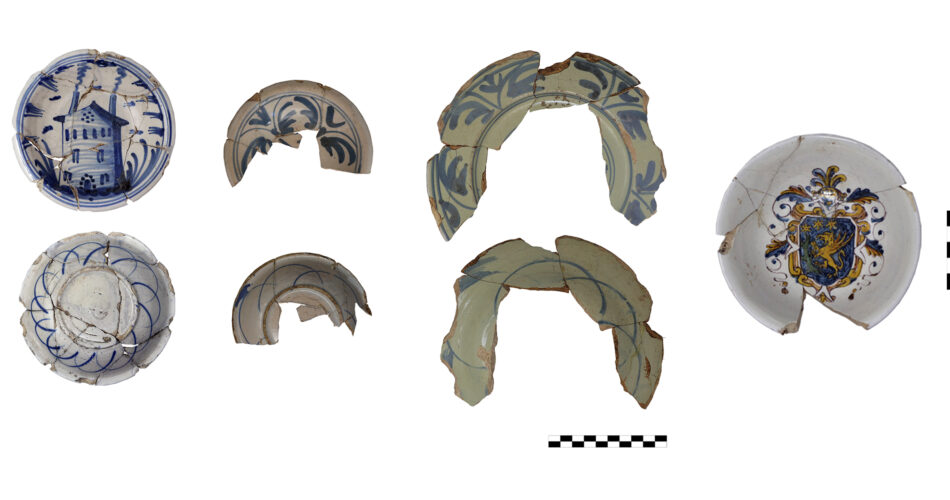They were discovered in a trash dump at Caesar’s Forum in Rome
Some 500-year-old medicine bottles and urine flasks, which were used to collect patients’ pee for medical analysis, were found in a Renaissance-era trash dump inside the Forum of Caesar in Rome, according to this article.
The 16th-century medical waste dump was discovered in 2021 during initial excavations near Caesar’s Forum, which was finished in 46 B.C. However, a guild of bakers used the exact same location to construct the Ospedale dei Fornari (Bakers’ Hospital) a millennium and a half later. The dump was later made by hospital employees, according to a study that was published on April 11 in the journal Antiquity.


A Renaissance-era cistern filled with ceramic jars, rosary beads, broken glass jars, and personal things like coins and a ceramic camel figurine was found by archaeologists working with the International Caesar’s Forum Excavation Project during their excavations. They claim that many of the items were associated with standard patient care at the Ospedale dei Fornari, where each patient was given their own “welcome basket” that had a jug, drinking glass, bowl, and plate as a hygiene measure.
More than half of the glass vessels discovered from the dump were probably urine flasks, or matula, as they are known in medieval Latin medical writings. During the Middle Ages and the Renaissance, uroscopy was a crucial diagnostic technique for doctors.
“The patient’s urine would be poured into a flask to allow a doctor to observe its color, sedimentation, smell, and sometimes even taste”, project directors Rubina Raja, Jan Kindberg Jacobsen, Claudio Parisi Presicce, and colleagues explain in the study. These tests might reveal whether a patient has diabetes, kidney disease, or even jaundice, as the additional glucose in their urine often gives it a sweet smell and taste.
Since they resemble oil lamps in shape and are uncommon in sites other than hospital dumps, urine flasks can be difficult to distinguish in archaeological contexts.
Lead clamps from furniture fittings connected to carbonized, or burned, wood were among the last items found in the cistern. These items could be proof of a historically documented hygienic practice, the burning of items from homes where the plague had been reported. Quinto Tiberio Angelerio, an Italian physician who established a set of guidelines for limiting the transmission of sickness, wrote about this practice in 1588.
The cistern was covered with a layer of clay after it was full, probably for hygiene reasons, the scientists explain. Although it was against the law, “the deposition of waste in cellars, courtyards, and cisterns, although prohibited, was a common practice”, study lead author Cristina Boschetti, an archaeologist at Aarhus University in Denmark, explains. Although landfills existed at this time outside the walls of Rome, according to Boschetti, the cistern may have been chosen in this instance as a location suited for sealing infectious material.
The dump’s “bespoke ceramicware”, according to Monica H. Green, a medical historian and independent scholar, supports the assumption that it belonged to a hospital.
Although boiling or cooking glass to sterilize it is effective today, “people did not know the effects of sterilization at the time”, Boschetti said. Green concurred, saying, “They must have known that at least some kinds of glass could withstand cooking or boiling, but that doesn’t mean they nevertheless thought in terms of ‘sterilization'”.
Little archaeological attention has been paid to other hospitals and medical contexts from the Renaissance era, despite the fact that the medical dump discovered in the Forum of Caesar is the second instance of hygienic disposal techniques connected to the Ospedale dei Fornari. The authors state in their conclusion that their research highlights “the need for a more complete overview of the hygiene and disease control regimes of early modern Europe”, while it significantly advances our understanding of historical practices.
